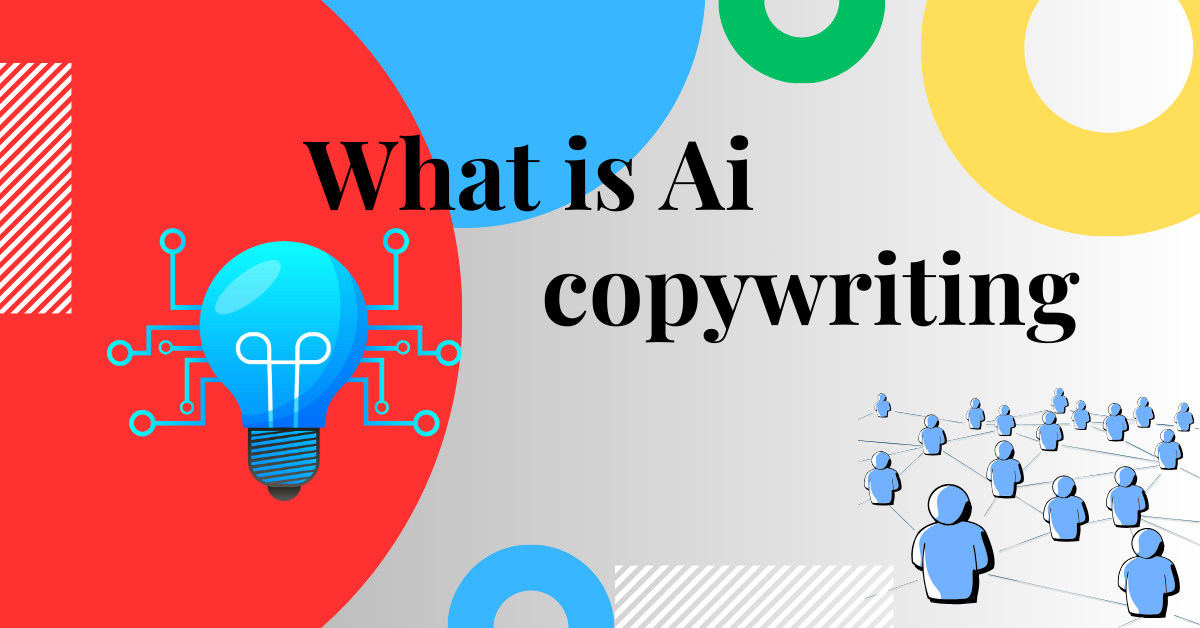Table of content
- What is Ai copywriting
- Understanding Content Writing
- The Importance of Content Writing
- The Content Writing Process
- Best Practices for Content Writing
- Conclusion
What is Ai copywriting
However,AI copywriting is the use of artificial intelligence technologies to create written content. This process involves using algorithms and machine learning models to generate human-like text for various purposes, such as marketing materials, blog posts, social media content, and more. AI copywriting has gained popularity in recent years due to its efficiency, speed, ability to produce high-quality content.
Content writing on the other hand, is the art and science of creating written material that is engaging, informative, and valuable to the target audience. It encompasses a wide range of formats, including articles, blog posts, whitepapers, eBooks, product descriptions, and more. Effective content writing is crucial for businesses and individuals looking to attract
Understanding Content Writing
However,Content writing is the process of crafting written material for digital platforms with the goal of engaging, informing, and influencing the audience. It plays a vital role in digital marketing strategies, brand building, and online communication. Effective content writing requires a deep understanding of the target audience, clear communication objectives, and the ability to create compelling narratives that resonate readers.
The Importance of Content Writing
However,In today’s digital age, content has become a cornerstone of online communication. Here are some key reasons why content writing is essential
Audience Engagement
However,Well-written content attracts and engages the target audience, encouraging them to spend more time on a website or social media platform.
SEO (Search Engine Optimization)
However,Quality content is crucial for SEO, as search engines prioritize websites that offer valuable and relevant information to users.
Brand Building
However,Consistent and high-quality content helps build brand authority, trust, and credibility among the target audience.
Lead Generation
Compelling content can drive lead generation by attracting potential customers and encouraging them to take desired actions, such as signing up for newsletters or making purchases.
Educational Value
Content writing is an effective way to educate and inform the audience about products, services, industry trends, and best practices.
Types of Content Writing
Content writing encompasses various formats and styles tailored to different platforms and objectives. Some common types of content writing include
Blog Posts
Informative articles published on blogs covering a wide range of topics, including industry insights, tips, guides, and opinion pieces.
Website Content
Content created for websites, including homepage content, product/service pages, about us pages, and FAQs.
Social Media Content
Short-form content designed for social media platforms like Facebook, Twitter, LinkedIn, and Instagram to engage followers and drive interactions.
Whitepapers and eBooks
In-depth and research-based content pieces addressing specific topics or industry trends, often used for lead generation and thought leadership.
Product Descriptions
Compelling and persuasive descriptions of products or services highlighting features, benefits, and value propositions.
Email Marketing Content
However,Content written for email campaigns, including newsletters, promotional emails, and drip campaigns aimed at nurturing leads and retaining customers.
The Content Writing Process
However,Effective content writing involves a structured process to ensure clarity, relevance, and quality. Here’s an overview of the content writing process
Research
However,Begin by conducting thorough research on the topic, audience demographics, industry trends, and competitor analysis. This step lays the foundation for creating valuable and relevant content.
Planning
However,Develop a content strategy outlining key objectives, target audience personas, content formats, publishing schedule, and distribution channels. Create an editorial calendar to organize content creation and publication.
Writing
However,Start writing content based on the research findings and content strategy. Use a clear and concise writing style, incorporating relevant keywords for SEO optimization (if applicable). Pay attention to grammar, spelling, and punctuation for professional presentation.
Editing and Proofreading
However, After writing, edit the content for clarity, coherence, and consistency. Check for grammatical errors, typos, factual accuracy, and adherence to style guidelines (if any). Proofread the content multiple times to ensure accuracy and readability.
Optimization
However,If the content is intended for online platforms, optimize it for search engines by including relevant keywords, meta descriptions, alt text for images, and internal/external links. Ensure the content is mobile-friendly and visually appealing.
Publishing and Promotion
However,Once the content is finalized, publish it on the appropriate platforms according to the editorial calendar. Promote the content through social media, email marketing, influencer outreach, and other promotional channels to reach a wider audience.
Analysis and Optimization
However,Monitor the performance of the published content using analytics tools to track metrics such as traffic, engagement, conversions, and ROI. Use insights from analytics to optimize future content strategies and improve performance.
Best Practices for Content Writing
However,To create compelling and effective content, consider the following best practices
Know Your Audience
In addition to that,Understand your target audience’s needs, preferences, pain points, and interests to create content that resonates with them.
Use Clear and Concise Language
However,Write in a simple and straightforward manner to ensure clarity and readability and avoid jargon, complex sentences, and unnecessary technical .
Tell a Story
However,Use storytelling techniques to captivate readers and create emotional connections. Incorporate anecdotes, examples, and narratives to make the content more engaging.
Provide Value
However, Offer valuable and actionable information that educates, solves problems, or entertains audience and Focus on addressing their needs and providing solutions.
Optimize for SEO
However,If writing for online platforms, optimize content for search engines by including relevant keywords, meta tags, headers, and structured data.
Use Visuals
However,Incorporate relevant images, infographics, videos, and other visual elements to enhance the content’s appeal and convey information more effectively.
Maintain Consistency
However,Maintain a consistent tone, style, and brand voice across all content pieces to reinforce brand identity and credibility.
Engage with Readers
However,Encourage interaction and engagement with readers through comments, social sharing, polls, quizzes, and calls-to-action (CTAs).
Update and Refresh Content
However, Regularly update and refresh existing content to ensure relevance, accuracy, and continued value for the audience.
Measure Performance
However,Use analytics tools to track content performance metrics and gather insights for continuous improvement and optimization.
conclusion
However,content writing is a strategic and creative process that involves researching, planning, writing, editing, optimizing, and promoting written material to engage and influence the target audience. By following best practices and leveraging technology, businesses and individuals can create compelling content that drives engagement, builds brand awareness, and achieves marketing objectives.


Leave a Reply